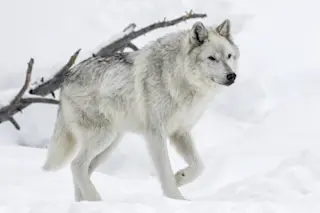Wolves have lived in the area that is now Yellowstone National Park in the U.S. for over 300,000 years. But there was a time — between about 1930 and 1995 — when no wolves walked the park.
In the early part of the 20th century, wolves were considered dangerous animals, with no benefit to the world. Even conservationists thought wolves were bad news. In fact, the lauded conservationist-president Teddy Roosevelt, who created the U.S. Forest Service, once called wolves “beasts of waste and desolation.” (He later softened his views on wolves and other big predators as he learned more about ecology.)
In that era, due primarily to pressure from wealthy livestock ranchers, the U.S. Government began a program to eliminate wolves from the lower 48 states. By 1930, the last wolf in Yellowstone had been killed. By the middle of the century, gray wolves were gone from the rest of ...















